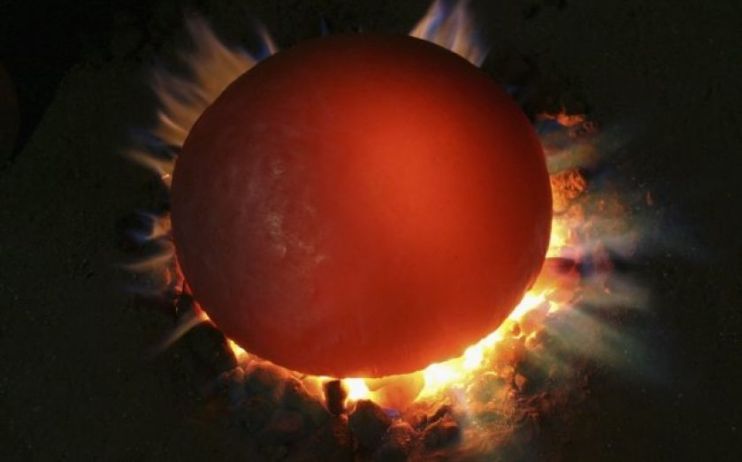Are we heading into a new commodities ‘supercycle’?

Since the beginning of the year commodity prices have been surging, leading a number of banks to declare the start of a new “supercycle” for the assets.
Bankers at Goldman Sachs were the first off the line, declaring that the Covid-19 had created the right structural conditions for the same kind of multi-year price growth last seen in the 2000s.
The last couple of weeks have seen copper touch heights not seen by the red metal in nearly a decade, while platinum – a crucial element in the catalytic converters used in cars – is lingering around its highest price since 2014.
And while gold enjoyed a massive rally last year as investors sought safe haven assets during the stock market carnage, 2021 could prove silver’s year – it has even attracted the attention of Reddit’s merry band of bedroom traders, fresh from their “Charge of the Light Brigade”-style assault on Wall Street’s hedge funds.
All this led to a good couple of weeks for those investors backing the FTSE’s mining giants, which one by one set out new and attractive dividend policies.
On the back of its best set of earnings since 2011, Rio Tinto, for example, proposed the highest dividend in its 148-year history of 400p a share.
But despite the promising start to the year, economists are divided as to whether the rapid charge will continue.
What is a ‘supercycle’?
The UN defines a “supercycle” as a “decades-long, above-trend movement in a wide range of base material prices” which follows from a demand shift.
The most recent example of this came in the first decade of the 21st century, with the rapid industrialisation of the so-called BRICs – Brazil, Russia, India and China – sent demand surging.
However, the onset of the 2008 financial crisis put something of a dampener on things, with only China delivering the growth anticipated.
With prices having plunged last year as the coronavirus pandemic shut down industrial activity, the resurgence of some economies – in particular China and the US – has now sent prices soaring again.
This, in combination with a newfound urgency for countries to get hold of precious metals crucial for net zero technologies, has raised hopes that prices could continue their stratospheric rise.
But will the surge continue, or, as others think, run out of steam within a couple of years?
Macro moves
For Jon Deane, former JP Morgan MD and now chief executive of commodities trader Trovio, the macroeconomic environment is primed for such a supercycle.
Before the Open: Get the jump on the markets with our early morning newsletter
“One of the only levers governments have left to drive the Covid recovery is fiscal policy – and that means government spending on things like infrastructure, and that will lead to a naturally inflationary scenario pushing prices up”, he said, citing the Biden administration’s $1.9 trillion stimulus package and China’s Belt and Road Initiative (BRI) as examples.
“Then, you add the immediate demand for materials to the supply constraints caused by the pandemic as nations try to adjust their processes for import and export, and that again pushes prices in destination markets up again.”
In his native Australia, for example, Deane said that aluminium prices had jumped 300 per cent over the course of the year due to new costs related to getting the metal through customs and onto construction sites.
Finally, he said, more fiscal spending will see a weaker dollar. “That alone is going to put a bit under commodity prices of things like gold, silver and platinum as stores of value”, Deane added.
Correcting course
But, says Cailin Birch, global economist at the Economist Intelligence Unit, doesn’t necessarily mean a multi-year growth cycle.
“It’s going to be another wild year for commodities, that’s for sure”, she said. “But apart form in a couple of areas, the conditions aren’t there for a supercycle”.
“The current surges are part of the initial rebound. Markets are currently awash with capital because of optimism about the bounce back and quantitative easing, and that capital is surging for returns.
“But though some economies like China and the US are doing well, many others have months if not years to go before they get back to pre-pandemic levels. So I expect the current enthusiasm to wear off somewhat in the coming months.”
That’s not to say, however, that prices are likely to fall again, Birch adds. “It’s notable itself that we expect the new prices achieved over the last quarter to be sustained over the coming years, especially for those metals used in the industrial sector.”
Pedal to the metal
Both Birch and Deane agree that those commodities set to do best over the coming months and years are those connected to so-called new growth industries.
“Essentially any metal that is going to be critical to high-tech industries – like those used in electric vehicle batteries or semi-conductors – will see a little more growth in the next couple of years, but nothing akin to what we’ve seen so far this year”, Birch said.
Aside from staples such as copper or aluminium, that brings into play a whole trove of other metals, like nickel or lithium.
But, says Deane, traders have been burned before by similar hype. “Two years ago there was a huge amount of hype around the lithium market on the back of developments with EV batteries.
“As a result, loads of capacity was brought onstream very fast – but then there wasn’t the demand.”
So are we about to see a long-term price boom, as several banks have suggested? Ultimately, no one knows for sure yet. But a little speculation never hurt anyone.